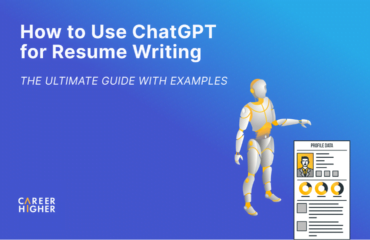Table of Contents
Resumes usually consist of five sections, namely, the contact information, professional summary, core competencies, professional experience, and education. Among these, recruiters and employers focus primarily on the professional experience section, as this is expected to include the most relevant details for the role you’re applying for, such as key responsibilities, achievements, and industry contributions throughout your career.
Therefore, as the essence of your resume relies mainly on this section, it is critical to creating strong resume bullets. In this article, we will discuss the important aspects that should be considered before creating these bullets.
1. STAR Method
Many professionals have a misconception that resume bullet points should only be about the responsibilities you managed during your role. However, most employers and recruiters often know the primary responsibilities of one’s job role, so there’s no need for you to focus mainly on this. Instead, make your resume bullets achievement-based by following the STAR method and highlighting your success stories. Let’s understand the STAR method in depth:
- Situation: The first part of the STAR method is the situation. This part of the bullet point should provide high-level information and necessary details of your key achievements.
- Task: The next part should indicate your main responsibility in achieving the result.
- Action: The third part of the bullet should consist of the act that enabled you to execute your responsibility successfully.
- Results: The last part should reveal vital outcomes that you achieved.
This method also helps you to answer the most frequently asked questions in an interview, such as “what did you do to achieve this result?”, “How did you execute this/that?”, “what was the main result?”.
Example:
Spearhead the strategy development and project management methodology (situation/task); develop essential project control systems of project KPIs, including schedule management, cost control, and risk mitigation (action); implement PMO governance, reporting, and review framework through the utilization of business standards and tools (results)
2. Tone of Voice
There is an ongoing debate on which resume language is considered to be “correct”. Truth be told, each employer and recruiter has their own preferences based on their company’s standards. There are also different formatting styles utilized, depending on the geographical location, but there are some general principles that most employers and recruiters agree upon:
i) Do not use personal pronouns
Resumes should be written in a telegraphic manner so that they are concise. This is done by eliminating all personal pronouns, such as “I”, “my”, and “me”. These should not be included because your resume signifies that all factual information in the document is from you.
Example:
❌ My contributions helped the company to exceed its sales targets.
✅ Successfully outperformed the annual sales target by 67%
ii) Use sentence fragments
One of our key methodologies is writing sentences in fragments in a first-person implied way. This means that the candidate should use the first-person point-of-view (POV) in writing all content, but they should leave out all personal pronouns.
Since we are not using personal pronouns, the sentences we create are considered sentence fragments. This is because phrases organized in a STAR method are not considered complete sentences themselves. Thus, resume bullet points should not end with a full stop.
Example:
❌ I interpret business IT requirements, formulate solutions, and deploy from concepts to operational actions.
✅ Interpret business IT requirements, formulate solutions, and deploy from concepts to operational actions.
iii) Use proper punctuation
Semicolons are used to connect clauses related to each other. Using the STAR method would require you to state four elements in one bullet point. Each of these components is essential to establish the whole essence of the bullet point. Therefore, it is more logical to separate these components using a semicolon.
Example:
❌ Orchestrate a high-level brand architecture strategic framework. Systemize portfolios of multimillion-dollar brands. Implement a streamlined portfolio of brands with a system of tiering, strategy, and brand design principles for each tier. Maximized the brand’s ecosystem, which enabled the company to accomplish all projects within the set timeline
✅ Orchestrate a high-level brand architecture strategic framework; systemize portfolios of multimillion-dollar brands; implement a streamlined portfolio of brands with a system of tiering, strategy, and brand design principles for each tier; maximized the brand’s ecosystem, which enabled the company to accomplish all projects within the set timeline.
3. Powerful Keywords
Making your resume stand out from the crowd requires a lot of effort. You need to illustrate your key responsibilities and achievements in a way that will attract recruiters and employers. Using strong and powerful keywords is one way to separate your resume from hundreds of other candidates.
Including relevant keywords is essential for improving your applicant tracking system (ATS) visibility. It requires a comprehensive analysis of your target jobs to identify relevant keywords. Understanding the basic requirements and qualifications of your target jobs will enable you to optimize your resume for success.
Example:
If you are applying for a Marketing Manager role within a Public Relations company, focus on your hard skills related to marketing, such as:
- Campaign Management
- Social Media Marketing
- Brand Awareness Improvement
- Search Engine Optimization
- Content Development
4. Language
Using proper language will demonstrate your communication eloquence to effectively convey your message. This will show employers how you can articulate your responsibilities, incorporate relevant skills, and highlight your achievements. Remember, your word choice will significantly impact your resume’s overall quality.
i) Action Verbs
Resume bullet points often start with an action verb. So, it is very common for candidates to repeat the same action verb for several bullets. It can be challenging to find synonyms that will perfectly reflect your job’s responsibilities.
One of the most overused action verbs in a resume is “lead”. It, therefore, wouldn’t be best to use this word twice in the same job role, or more so, three or more times in a row. Instead of using the word “lead”, you can say “spearhead”, “pioneer”, or “envision”.
ii) Adjectives
Another important aspect of a resume is the utilization of adjectives. Candidates should pick adjectives based on the job descriptions of their target roles, while also including unique and strong adjectives that will draw interest from recruiters and employers. Here are some strong adjectives you can use in your resume:
- Efficient: demonstrates your ability to perform something with maximum productivity.
- Collaborative: demonstrates your ability to work as a team effectively.
- Cutting-edge: demonstrates highly advanced developments.
5. Verb Tenses
Verb tenses signify if you are in the process of completing something or if it is already done. It helps you set the flow of the situation and establish predictable patterns from present to past occurrences. This is a key element for effective writing.
i) Present Tense
If you are currently employed, your job description under this role must be listed in the present tense. This is to denote that you are still performing these responsibilities today. The only exception is if you’ve already achieved/completed something under this job role.
Example:
Spearhead strategic brand transformation; direct brand strategy development, visual identity design, and new assets advancement; implemented consumer brand refresh initiatives; boosted brand visibility by 56%
ii) Past Tense
All your work history should be listed in the past tense. This is to clarify that all your responsibilities and achievements under these job roles have already been completed. Following this format will increase your content’s comprehensivity.
Example:
Administered brand projects; conducted qualitative and quantitative research analysis to create highly effective brand communications, strategy, identity, and guidelines; designed and maintained brand health KPIs and defined value targets; accomplished reports, budget reviews, and scope of work regularly.
Demonstrating your best self through resume-writing can be challenging. While other candidates focus on making their resumes look pretty, you can maximize your resume’s potential by strengthening its essence with well-written bullet points. Recruiters and employers look at what you do and what you have done throughout your career to ensure that you are suitable for the role. Most importantly, the applicant tracking systems (ATS), which are widely used by recruiters globally, will rank your resume higher if you have all relevant keywords and if your resume is formatted correctly.











